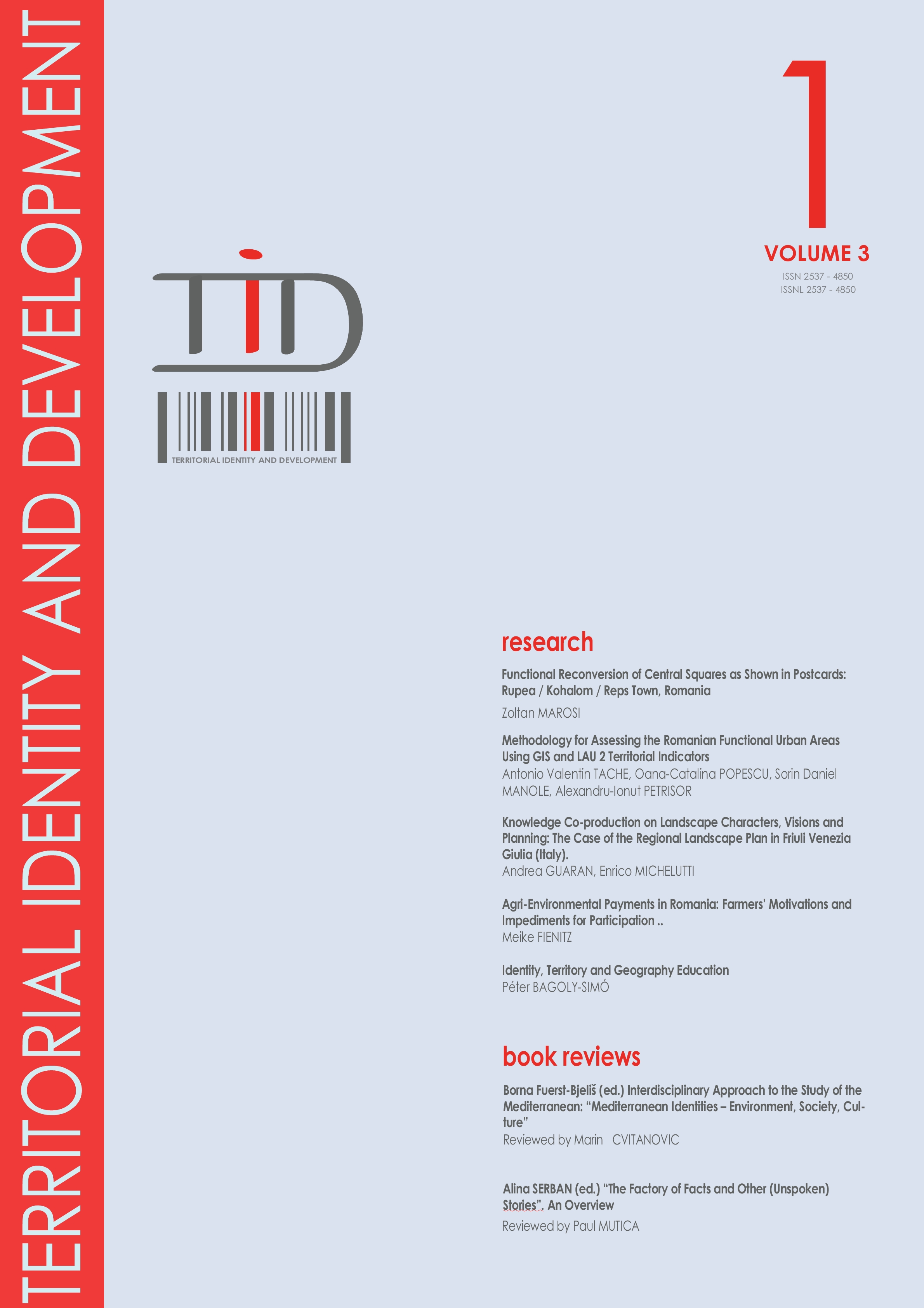METHODOLOGY FOR ASSESSING THE ROMANIAN FUNCTIONAL URBAN AREAS USING GIS AND LAU 2 TERRITORIAL INDICATORS
METHODOLOGY FOR ASSESSING THE ROMANIAN FUNCTIONAL URBAN AREAS USING GIS AND LAU 2 TERRITORIAL INDICATORS
Author(s): Antonio Valentin Tache, Angel Iulian Popescu, Oana-Cătălina POPESCU, Sorin Daniel Manole, Alexandru-Ionuţ PetrişorSubject(s): Geography, Regional studies, Regional Geography
Published by: Universitatea Babeş-Bolyai
Keywords: metropolitan areas; territorial statistics; spatial planning; polycentric development; urban areas;
Summary/Abstract: The territorial dimension of the European convergence policy is represented by polycentricity. The main challenge in promoting a polycentric and balanced territorial development is represented by an accurate delineation of the functional urban areas. Effective development strategies require the extension of functional areas to be scientifically defined as a critical mass. According to several studies, Functional Urban / Metropolitan Areas can be determined based on the number of commuters going to the core city, in different shares of the total economically active population. The evaluation of the polycentric development of the network of settlements in Romania is hampered by the lack of reliable data on the number of commuters at the settlement level. The indicator is not statistically monitored and consequently misses from the list of indicators quantified by the National Institute of Statistics. Therefore, the present study has as main purpose to identify the Functional Urban Areas in Romania for cities with more than 30,000 inhabitants. The methodology is based on the statistical support of ArcGIS 10.3 and on analyses based on indicators such as population and number of employees (absolute values and dynamics) at the level of settlements (LAU 2). The results of the study consist of mapping the functional urban areas of the large Romanian cities, which allows an assessment of the legally constituted metropolitan areas of Romania.
Journal: Territorial Identity and Development
- Issue Year: 3/2018
- Issue No: 1
- Page Range: 24-37
- Page Count: 14
- Language: English

